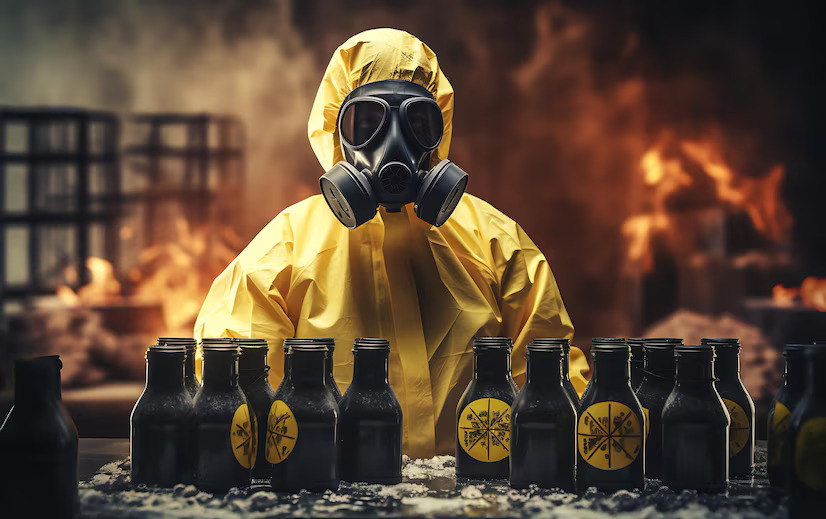Workplace safety should always be a top priority, and understanding the Control of Substances Hazardous to Health (COSHH) is an essential part of keeping both employees and businesses protected. Hazardous substances can be found in a wide range of industries, such as construction, healthcare, manufacturing, and agriculture, and exposure to these substances often comes with significant health risks if not managed correctly.
This guide will walk you through what COSHH is, why it’s important, and actionable steps your organization can take to ensure compliance and safeguard employee well-being.
What is COSHH?
COSHH stands for the Control of Substances Hazardous to Health, a legal requirement in the UK designed to prevent or reduce exposure to substances that could potentially damage health. These substances include chemicals, dust, fumes, biological agents, and even nanomaterials.
Employers must prevent or adequately control the risks posed by these substances to protect their workers. Failing to comply with COSHH regulations can lead to health risks, disruptions in productivity, employee legal claims, and penalties for the business.
Examples of Hazardous Substances
To better understand COSHH, it’s worth reviewing some common hazardous substances found in various workplaces, including:
- Cleaning products such as bleach or ammonia-based agents, which may cause skin irritation or respiratory issues.
- Construction dust, especially silica dust, which can lead to lung damage and diseases like silicosis if inhaled regularly.
- Solvents and paints used in industries such as manufacturing or automotive, which can irritate the skin, lungs, and eyes.
- Biological agents such as bacteria and viruses that healthcare workers or laboratory staff might encounter.
- Fumes from soldering or welding, which pose respiratory risks to those in metalworking professions.
Why is COSHH Compliance Important?
Fulfilling your duties under COSHH is about more than just meeting legal requirements—it’s about fostering a safe and productive workplace. Here’s why compliance matters:
1. Prevent Health Issues
Hazardous substances can cause short-term and chronic health problems, including allergic reactions, rashes, asthma, and even severe diseases like cancer. By adhering to COSHH protocols, you reduce employee exposure and minimize these risks.
2. Boost Productivity
Healthy employees perform better, and a safe working environment boosts morale. When workers feel that their well-being is prioritized, absenteeism decreases, and productivity thrives.
3. Avoid Legal and Financial Penalties
Neglecting COSHH guidelines can lead to legal action, fines, compensation claims, and damaged reputations. Proactively complying with COSHH not only keeps employees safe but also protects your business from potential lawsuits or costly regulatory breaches.
4. Meet Regulatory Requirements
Employers have a responsibility to protect workers under COSHH, and failure to comply can invite enforcement action from regulatory bodies such as the Health and Safety Executive (HSE) in the UK. Consider Explaining the Term COSHH in Detail.

How to Ensure COSHH Compliance
Staying compliant with COSHH may feel daunting, but breaking it down into manageable steps can simplify the process. Here’s how you can start.
1. Identify Hazardous Substances in Your Workplace
The first step toward COSHH compliance is creating an inventory of all substances used or stored on your premises. Label, categorize, and understand these substances to identify which may pose risks to your employees. Essential resources for this step include Safety Data Sheets (SDS) provided by suppliers and manufacturers.
2. Conduct a COSHH Risk Assessment
A comprehensive risk assessment involves:
- Identifying all hazardous substances employees could encounter.
- Evaluating how staff members might be exposed (e.g., inhalation, skin contact, ingestion).
- Determining the risks associated with exposure and who might be affected.
- Documenting your findings to create a record of potential hazards.
3. Implement Control Measures
Use the principles of prevention laid out in COSHH to manage the risks effectively. Control measures might include:
- Substitution: Replace harmful substances with safer alternatives where possible. For example, consider using non-toxic cleaning agents.
- Engineering Controls: Introduce Local Exhaust Ventilation (LEV) systems to control fumes and dust at the source.
- Safe Work Practices: Train employees on proper procedures and safe handling techniques. This may involve ensuring that containers are sealed and that spills are cleaned immediately.
- Personal Protective Equipment (PPE): Provide workers with gloves, masks, goggles, or protective suits in cases where other controls aren’t sufficient.
4. Provide Employee Training
Education is a vital component of COSHH compliance. All employees and contractors who may be exposed to hazardous substances should receive training on the following:
- Identifying harmful substances.
- Recognizing the risks of exposure.
- Proper usage and maintenance of control measures, including PPE.
Regular refresher courses help ensure that safety awareness remains high within your workforce.
5. Monitor and Maintain Controls
Simply implementing control measures is not enough—you need to regularly check their effectiveness. Routine inspections and audits can help identify failures or deficiencies. For instance:
- Check that ventilation systems are functioning correctly.
- Ensure PPE is clean and in good condition.
- Confirm all employees follow safe work practices.
Examples of Real-Life COSHH Benefits in Action
Compliance with COSHH has been demonstrated to save lives and improve workplace safety significantly. Here are two examples:
- The Construction Industry
A study found that fostering compliance with COSHH through effective dust control measures decreased rates of occupational lung diseases, such as mesothelioma and asbestosis, among construction workers in the UK.
- Healthcare Workers
Proper disposal systems for biological agents in hospitals have significantly reduced the incidence of infectious diseases being transferred from samples to healthcare providers. COSHH regulations were instrumental in creating these processes.

Build a Safer Workplace Today
COSHH might seem like a lengthy and intricate regulation, but its purpose is clear—to protect health and save lives. By identifying hazardous substances, implementing proper control measures, and promoting ongoing training, you can drastically improve safety across the board.
Is your workplace ready to take its next step toward compliance? Start by conducting a COSHH audit today, and empower your employees with the knowledge and tools they need to thrive in a secure environment. Read more here and Thank you.

